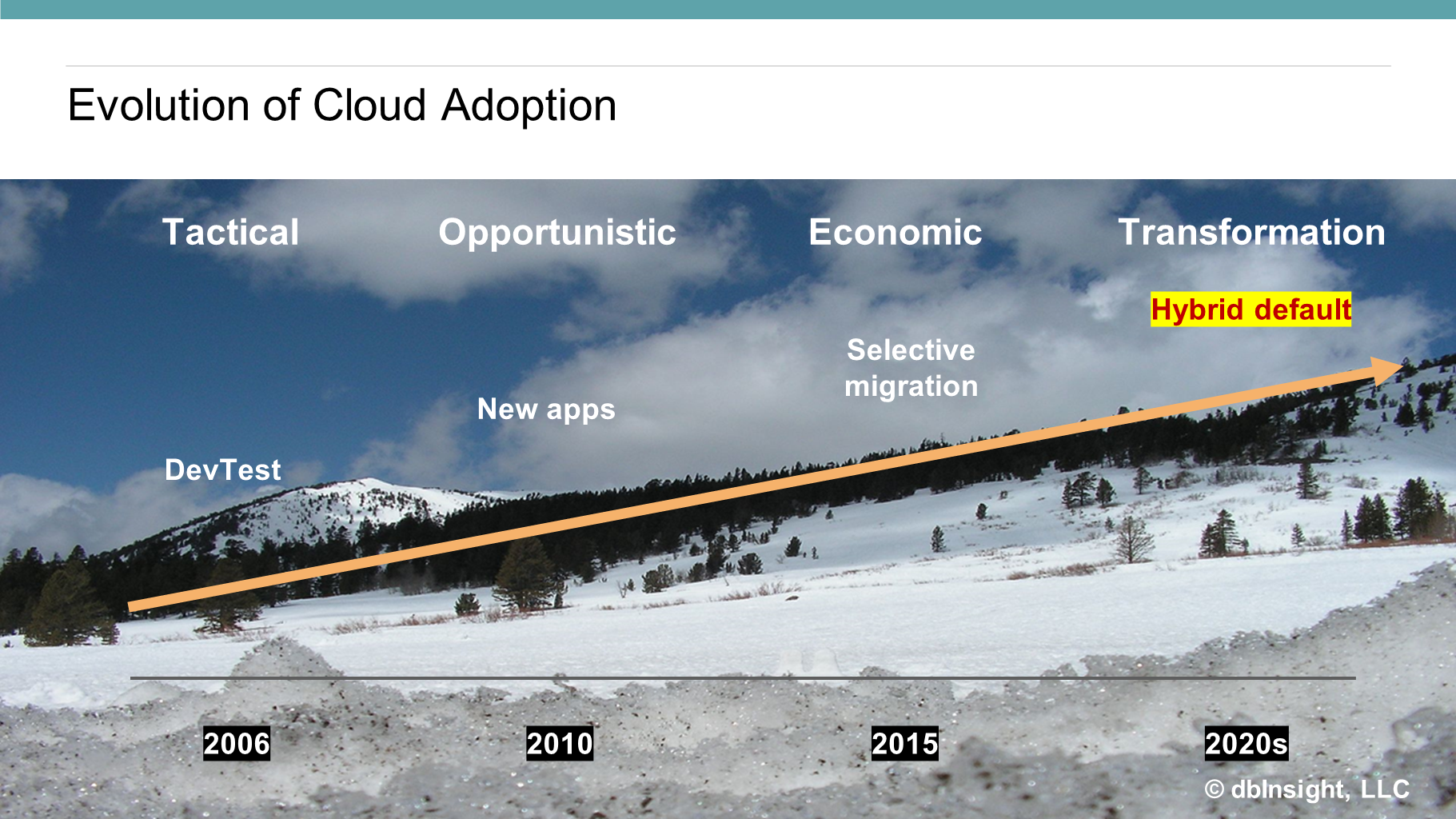It's coming — The Hybrid Default
Numerous indicators out there prove that there is a definite move toward the cloud. We've seen this in our own discussions with enterprises. Back when AWS introduced modern cloud computing back in 2006 (well, maybe we should give Salesforce credit for devising modern SaaS back in 1999), developers embraced it as a quick way to hustle up machines to conduct DevTest without having to get IT to sign off or go through the hassle of ordering and installing machines that would otherwise sit idle much of the time.
With the emergence of the smartphone and Apple's opening of the AppStore back in 2008, a Cambrian explosion happened as developers began grinding out mobile apps. Given the sharp traffic spikes when you create apps used by smartphone users, in the 2010s, mobile apps became the second wave that further pushed cloud adoption. Today, it is the emergence of a wide range of SaaS applications that complement existing heartbeat systems in areas such as customer engagement, operational optimization, or cybersecurity, not to mention the emergence of new cloud-native AutoML and real-time streaming services, that are prompting the next wave of adoption.
In the 2020s, we expect the next wave will be the Hybrid Default, where the decision making process of where to deploy IT systems gets reversed.
Until now, the starting point for deciding where and how to deploy IT systems was typically on-premises, and that after that, the question of whether the system would be suitable for cloud deployment was evaluated. The only exception was for services that were only available in the cloud. As noted above, in the next decade, the starting assumption will be for cloud deployment, with justification for why exception cases should be deployed on premises. The rationale is that enterprises are seeking to take advantage of the operational simplicity, flexibility, agility, and fast time-to-benefit that cloud-native deployment enables. It's a chicken and egg scenario: enterprises are expecting their technology organizations to shape up and become just as efficient as cloud providers, while IT organizations seeing the handwriting on the wall want to emulate the responsiveness of the cloud folks.
That doesn't mean that 100% of systems are going into the cloud. There are always going to be "if it ain't broke, don't fix it" scenarios. There will be other use cases where for policy, regulatory mandate, or other reasons, systems can't or won't move to the cloud. And then there will be instances where cloud manageability and simplicity is desired for systems or data that for various reasons cannot go into a public cloud. That's where the Hybrid Default comes in, with the driver being the operational simplicity of cloud-style management. We define hybrid as a superset of private + public clouds, with the common thread being that there is some form of converged control. That could come through hyperconverged infrastructure, a private cloud platform that is managed locally, a cloud environment that is managed or orchestrated by a public cloud services provider, and/or of course, deployment in a public cloud.
Either way, we expect that the 2020s will be the era of the Hybrid Default, and that there will be many different paths for getting there.

